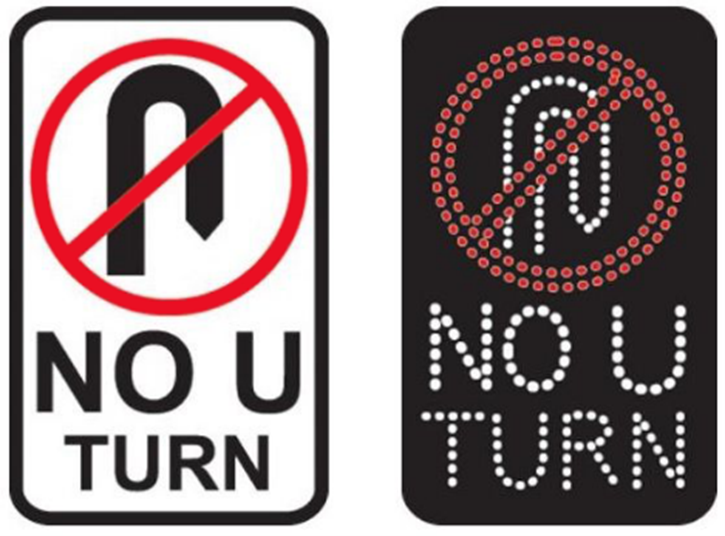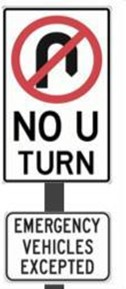Response Driving
Technical
Scope
This Operational Guideline must be followed by members driving NSW Rural Fire Service (RFS) operational vehicles to emergency incidents and should be read in conjunction with RFS OPG - Safe Driving.
Fundamental Protocols underpin the actions of all RFS members and must be adhered to at all times. They outline the Principles of being an RFS member and provide guidance on conduct to support the safety and wellbeing of members.
Guiding Principles
- Safety is the highest priority when driving. Members must consider their own safety, the safety of passengers, and other road users at all times, as outlined in RFS OPG - Safe Driving.
- Drivers are solely responsible for the operation of the vehicle, must be considerate of its condition and drivability, and must consider prevailing traffic, weather, road rules and road conditions at all times.
- Respond/Response Driving means driving an RFS vehicle while responding to an emergency incident using visible and audible warning devices. Response Driving commences from receipt of the instruction to “Respond” to an emergency incident and ceases upon arrival at the incident or a direction to “Proceed”. Response Driving is not permitted in a personal vehicle, or in any vehicle not fitted with lights and sirens.
- Response Driving is only permitted in response to an emergency incident as advised by FireCom, under the instruction of the OCC Response Coordinator (Resco), Incident Controller (IC), District Duty Operations Officer (DDOO), or District Manager (DM).
- Careful consideration needs to be given to the need to Respond, taking into consideration factors such as the urgency of the incident, the location and number of other appliances already responding, and what benefit can be gained.
- All drivers are to seriously consider the need to exceed the speed limit weighing up the benefit to be gained against the ability to operate the vehicle safely.
- In principle, Responding is not necessary when called to incidents such as “Smoke in the Vicinity”, “Assist other Agency”, etc. where FireCom does not advise the job is tagged as urgent.
- If an RFS vehicle is requested to respond to an emergency incident with an adult ‘non- Bush Firefighter (BF) trained’ member aboard, whilst en-route to or attending any other authorised activity; the Officer in Charge (OIC) is to Respond as directed and be responsible for managing the safety of the ’non-BF trained’ member during the incident.
- Note: a vehicle must not Respond under any circumstances to any emergency incident with a cadet or junior on board.
- Proceeding means driving a vehicle to an incident, when not requiring warning devices. While Proceeding, members must observe all road rules, and no exemptions to the road rules apply.
- Members in private vehicles driving to the brigade station or direct to the incident must only Proceed and must observe all road rules at all times.
Road Rules 2014 (NSW)
- Road Rules 2014 (NSW) (NSW Road Rules) provide the legislative framework for driving in NSW. Drivers will be liable for any breach of NSW Road Rules while they are operating an RFS vehicle. In addition, drivers may be criminally liable for offences under the Crimes Act 1900 (NSW).
- Road Rule 306 provides an exemption to the NSW Road Rules, where members are driving an RFS vehicle under lights or sirens and in the course of an emergency, where the driver has taken reasonable care at all times and the actions, which might be contrary to a NSW Road Rule, are reasonable in the circumstances.
- Taking reasonable care and determining whether an operation is reasonable in the circumstances will vary. Even if the emergency is serious, there is no legal excuse for failing to take reasonable care when driving an RFS vehicle.
- Failure to meet the requirements of ‘reasonable care’ may mean that the driver is subject to civil and/or criminal liability in the event of a collision.
- In addition to the NSW Road Rules, RFS has outlined requirements for its members while Responding. These requirements are in addition to the requirements of the exemption in NSW Road Rule 306 and are designed to help members comply with that exemption and drive safely and reasonably. When Responding, RFS requires its drivers:
- To come to a complete stop in the scenarios listed below. After coming to a stop, drivers must take steps to confirm it is safe to continue before doing so:
- Red traffic lights or a ‘Stop’ sign.
- Unguarded railway crossings with limited visibility or if a train is approaching.
- Blind intersections.
- Intersections where traffic in some lanes is not visible.
- Intersections where the RFS vehicle does not have right of way.
- To comply with the following:
- Speed limit in a school zone (consider turning off sirens to limit distracting the attention of pedestrians and other drivers from their surroundings).
- Speed limit when passing a school bus displaying an illuminated 40km/h speed limit sign/light.
- Stopping at a children’s crossing.
- Giving way at a pedestrian crossing when occupied.
- Not entering a level crossing when a train is approaching.
- Speed limits posted at locations where road works are in progress and will also stop when instructed by traffic controllers (note: traffic controllers are required to progress emergency vehicles when safe to do so).
- To slow down to a speed which will allow them to quickly stop and avoid a collision at:
- ‘Give way’ signs.
- Pedestrian crossings (unoccupied).
- Buses setting down passengers.
- The vicinity of schools when students are arriving or leaving.
- To come to a complete stop in the scenarios listed below. After coming to a stop, drivers must take steps to confirm it is safe to continue before doing so:
- When driving outside of NSW, the applicable local state road rules apply.
Visible and Audible Warning Devices
- The safety of personnel, other road users, and pedestrians is always the highest priority whilst Response Driving.
- Visible warning devices (lights) must be used at all times, when Response Driving.
- Audible warning devices (sirens) should be used when Response Driving, except in some circumstances such as:
- driving on private lands;
- driving in remote or rural areas where there is livestock; and/or
- there is no safety advantage to be gained by their use.
Requirements for Performing U-Turns
- Follow the safety principles outlined in RFS OPG – Safe Driving.
- Consider other reasonable alternatives to using the facility, such as freeway exit points or intersections.
- While Responding drivers may use ‘No U-turn’ facilities (see Appendix One for signage depicting these facilities), considering whether performing the U-turn is reasonable in the circumstances.
- The safe use of U-turn facilities may have been formally assessed (considering vehicle dimensions and performance) by Transport for NSW (TfNSW) and identified in Computer Aided Dispatch (CAD) and Mobile Data Terminal (MDT) mapping layers.
- While Proceeding, RFS operational vehicles cannot use ‘No U-turn’ facilities with an ‘emergency vehicles excepted’ baseplate.
Special Considerations
Trailers
- On occasion, drivers may be tasked to Respond by the IC, DM or Resco, while towing a trailer on an RFS vehicle. In these circumstances, drivers cannot exceed the posted speed limit, nor the speed restrictions associated with the trailer specifications.
- For information relating to Safe Driving with a trailer, see RFS OPG - Safe Driving and RFS OPG - Driver Licensing.
Support Vehicles and Additional Appliances
- Support vehicles (communications, catering, self-contained breathing apparatus (SCBA) support, lighting, supply, crew transport, etc.) and appliances called later to assist will Proceed to the incident unless there is an explicit instruction to Respond given by the IC, DM, DDOO or Resco.
Pedestrians
- Pedestrians do not have to assist the passage of an emergency vehicle. The driver of an RFS vehicle MUST NOT force a passage through pedestrians. Whilst pedestrians may choose to give way, the driver must be prepared to give way to pedestrians at all times.
Other Road Users
- Regardless of the urgency, no exemption gives an RFS driver the authority to force another road user to break the road rules.
Speed/Red Light Cameras
- Drivers who activate a speed or red light camera whilst Responding should advise FireCom immediately and make a record of the following:
- Date, time, and location;
- Driver’s details;
- Posted speed limit;
- Road, weather, and traffic conditions; and
- Information regarding speed according to vehicle speedometer.
- Drivers who activate a speed or red light camera whilst Proceeding have no exemptions and will remain liable for any penalty.
Accidents or Motor Vehicle Collisions
- Refer to the information contained in RFS OPG - Safe Driving.
Related Information
- Crimes Act 1900 (NSW)
- RFS OPG - Convoy Driving
- RFS OPG - Driver Licensing
- RFS OPG - Guiding Vehicles
- RFS OPG - Safe Driving
- RFS Service Standard 6.1.2 Qualifications for NSW RFS Members
- Road Rules 2014 (NSW)
Appendices
Appendix One - 'No U-Turn' Signage


Content Owner: State Operations
Date Approved: 19 Aug 2025
Review Required: 19 Aug 2028
Version: 1.0
If you have any questions or feedback on Operational Doctrine, please email Ops.Performance@rfs.nsw.gov.au.



